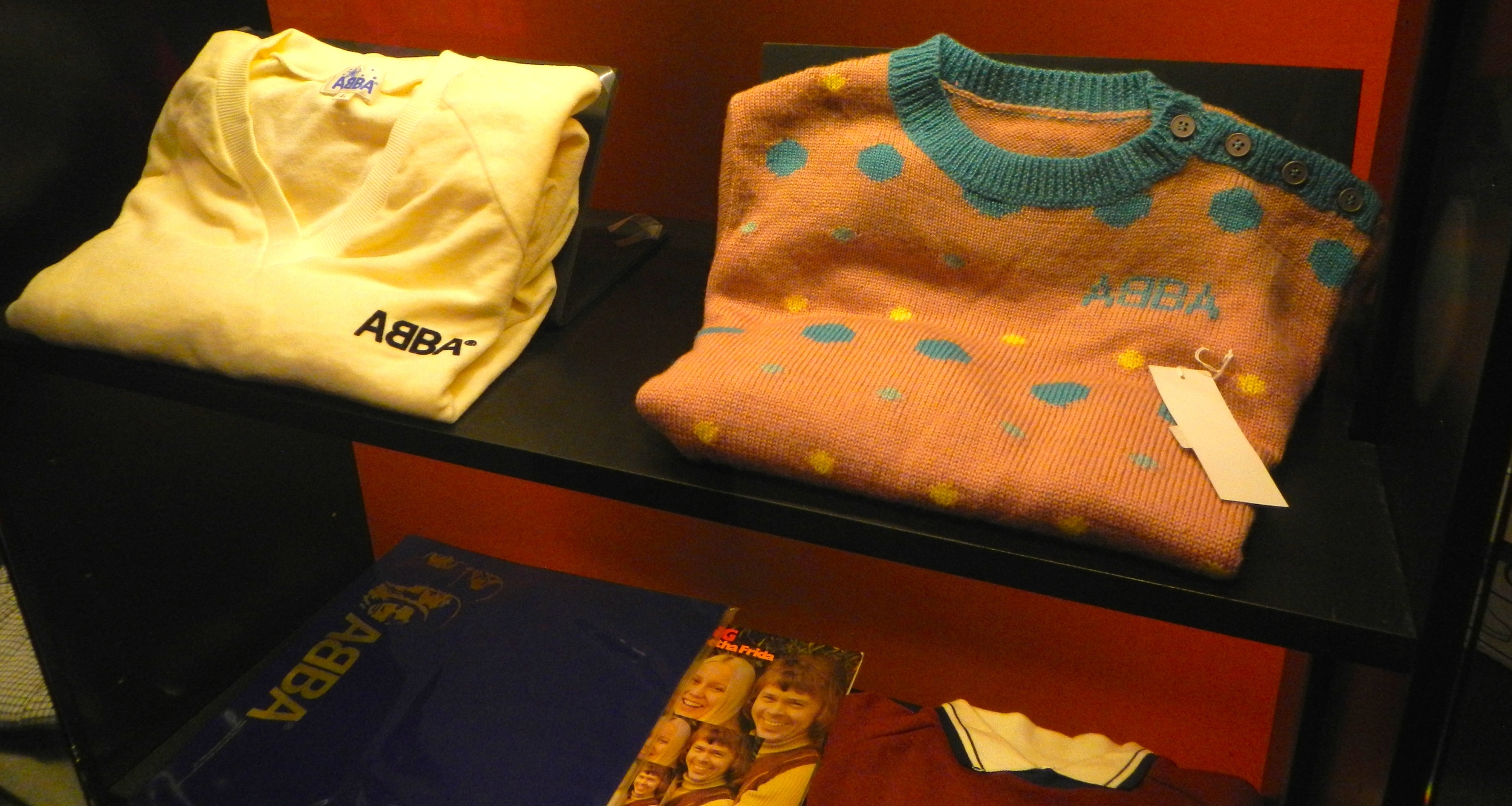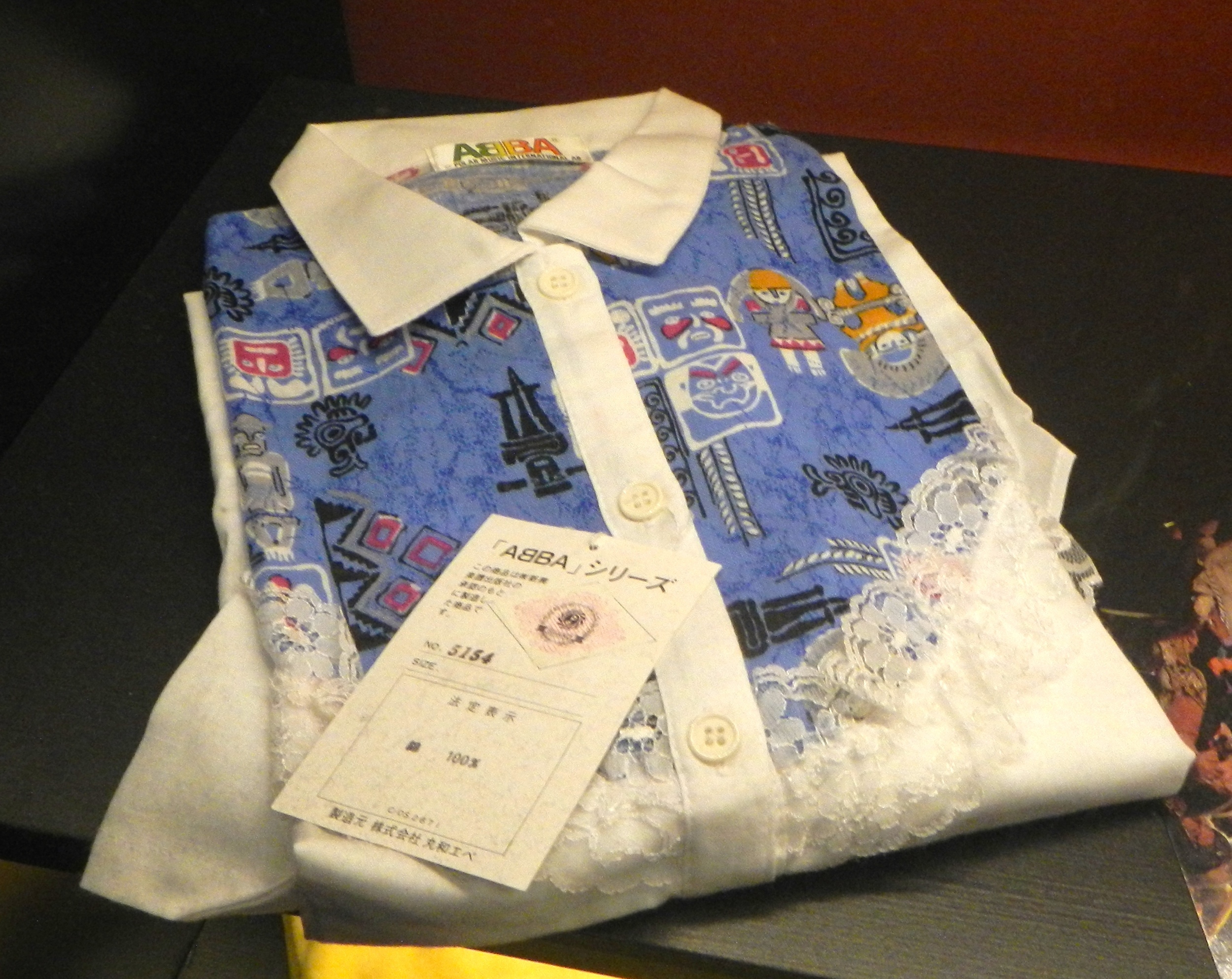No self-respecting tourist could possibly visit Stockholm and exclude ABBA The Museum from their itinerary. Located on an island with other tourist hot-spots like Skansen and Grona Lund, the building housing ABBA the Museum, may appear small, but it took us over three hours to learn everything that we ever wanted to know (and then some) about Sweden's most popular band.
Our ABBA experience started before we purchased our admission. In the outside courtyard, we were given the opportunity to be our favorite ABBA member in a photo-op and we spotted a ABBA themed bus.
We added an additional 40kr to our 145kr admission fee, so that we could have the audio tour. The audio tour had tons of in-depth commentary from all four of the band members, plus important people who knew and worked with them. It's a worthy addition to the ABBA experience.
After watching a five minute introduction film, that left us pumped for all things ABBA, we entered the museum and saw this giant sign.
The first part of the museum is dedicated to the early lives of the band members- Agnetha Faltskog, Bjorn Ulvaeus, Anni-Frid Lyngstad and Benny Andersson.
ABBA won the 1974 Eurovision contest with Water-Loo. On display, they had the costumes that they wore, the guitar played and the medal that they won in the contest. It was this win that put ABBA on the fast-track to fame.
There was a sign telling us to pick up the phone when it rings to hear a message from the band. Sadly, we waited and waited and it never rang. I guess ABBA didn't want to talk to us!
There was a section of the museum with recreations of ABBA's recording studio, their managers office and a country cabin where they liked to go to escape and write songs.
We saw several displays of tour merchandise, including ABBA soap!
There was also some ABBA fandom that was a bit creepy.
Beyond the music, ABBA is know for outrageous and unforgettable costumes. I love the cat dresses. Besides the many outfits on display, there was a mock costume shop and scene depicting a typical ABBA tour dressing room.
It was at ABBA the Museum, that Dan learned that I really can't sing. I told him and he didn't believe me. Here I am, butchering Dancing Queen. No video, I spared you.
We also played around on instruments. This was my first time holding a guitar.
We saw all of their albums and gold records on display.
This has to be the best album cover of all time. Nice jumpsuits. I want to hear Gracias Por La Musica!
We saw Benny's childhood accordion and their snazzy tour microphones.
The saddest thing in the museum was this room.
The room is a recreation of Agnetha's house, where she lived after divorcing Bjorn. In the audio commentary, Bjorn remembers the sadness over picking up their children from Agnetha's house and how she was the one who decided to put the children above being in the band. He wanted to keep making music and she wanted to retreat to a quiet life and raise their children. In reflection, he admits that she was right about putting the children first and at the time, he couldn't understand how she could abandon their dream of ABBA.
The ABBA component makes up about 90% of the museum, however there is a small section dedicated to other Swedish musicians. Who remembers Roxette?
Modeled after the American Rock and Roll Hall of Fame, the Swedish Music Hall of Fame opened in the spring of 2014. It was a small exhibit, limited to one room and we saw the initial batch of inductees. The honorees seemed to represent a wide range of styles, but I had not heard of any of the artists. The immense fame of ABBA really overshadows everything else in the museum.
Whether or not you are a fan of ABBA, the museum is a must-do tourist attraction. It's highly interactive and entertaining.






















































